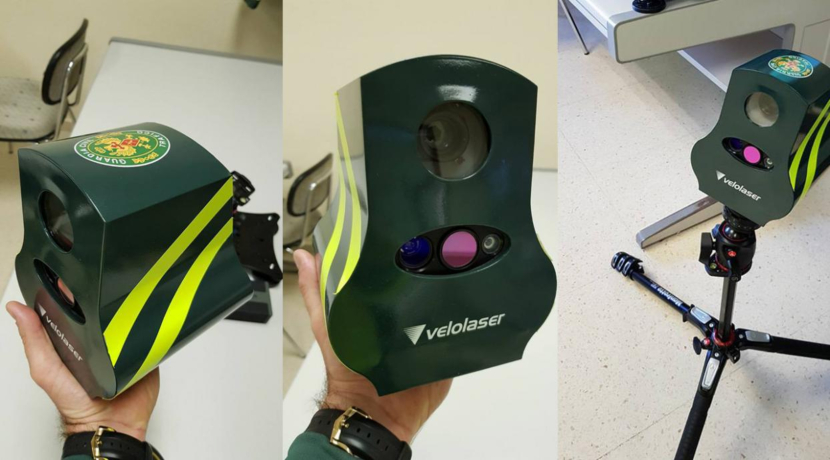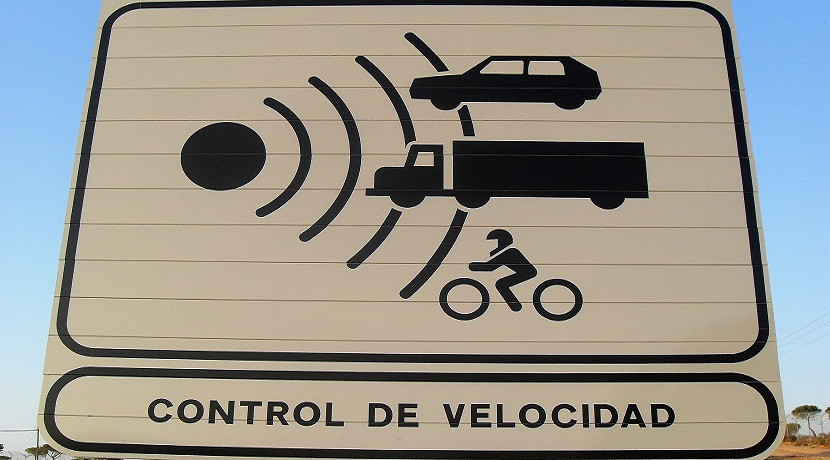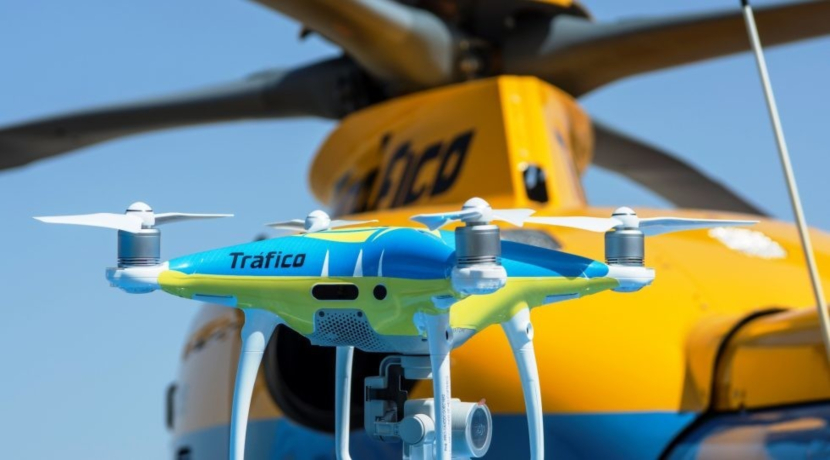The Velolaser, the undetectable radar of the DGT

The General Directorate of Traffic collected more than 241, 3 million euros for penalties during 2017, of which, 75.8 million were for the more than 1.74 million complaints related to speeding caught by fixed speed cameras .
Therefore, it is essential to keep the eyes wide open and the accelerator pedal well controlled, because to traditional fixed and mobile radars we must add the Velolaser , invisible kinemometers.
What are these radars?
The Velolaser of the DGT, classified as mobile radars, found a place in the roads in early 2018 with the main objective of better the safety of the drivers by controlling the speed limits to the millimeter.
These are small devices that have a very wide functionality, a improved version of the classic radars. Its small dimensions and weight [about 50cm and 3kg] make it easier to recognize them on the road than locating conventional radars. In addition, thanks to its ease of transport and its features, can be installed in many places : with a tripod next to a car as before, on a guardrail, hooked to a signal or on the body of a car or a motorcycle of the agents.
In short, we could define the Velolasers as radars with a unprecedented versatility to date to control the speed limits in the Spanish roads.
How do they work?
In general, they work like any other radar/conventional cinemometer, but much more compact and capable of being installed in practically any fixed point of the track. In addition, they can also be attached to the sheet of official vehicles of the Civil Guard [motorcycles or cars].
The new radars of the DGT use laser technology to check which drivers exceed the speed limits allowed in road. They work in a autonomous way and are wireless , with a range of up to 5 hours and are controlled remotely via WiFi or 3G/4G by the relevant traffic agents. p>
The Velolasers are able to control both directions of the movement , recording the route and speed of a car from 15 to 50 meters . The device has a range of action that can reach measures ranging from 30 km/h to 250 km/h . In addition, they do not need to be on the same plane as the vehicle under surveillance, so they can be located on a bridge.
They work 24 hours a day
While the Velolaser radar is working, officers will be able to stay inside the patrol car placed in a location that is not easy to detect/alert the driver. The device can work both at night and during the day, perfectly differentiating the offending vehicle and its typology.
What behaviors do these radars sanction?
- Any excess speed. They are used to perform general controls .
- Excesses of speed that lead to the withdrawal of points from the card. They are used to perform selective controls .Presentation of allegations "itemprop =" image ">
Once the speed of the vehicle that has committed the violation exceeds the limit on the road, the information is sent to a nearby tablet that the agents have in their possession. Because of the remote technology with which the Velolaser works (WiFi, 3G or 4G), it allows the presence of an agent not to be near the device that can reveal that there is a radar.
Once fined, the notification procedure can be given two modes:
- In general, agents should try to notify the offense and identify the driver immediately after committing it , something that will be done by a patrol giving the stop As far as possible, with this method, agents can prevent drivers from associating the fine [depending on the type of infraction] and the loss of points to a relative.
- However, with the Velolasers, there is no obligation to stop the driver who commits the offense, so the fine can be notified on the road or in the mailbox of the address , accompanied by the relevant image and information.
Advantages of the Velolaser in front of conventional mobile radars
Lower size (less than 50cm, capable of being held with one hand)Weight (3kg)
Wireless
Virtually undetectable
Very broad installation versatility
Capable of controlling the speed of both directions of circulation
Remote technology means that it is not necessary to have an agent in the vicinity of the device that can reveal that a radar is located there
What margin of error do Velolaser radars have?

As we know, traditional radars have a margin of error of 7%, following the tolerance threshold 7km/h. However, with Velolaser radars this percentage has dropped . They will be 2% less permissive following a Supreme Court decision that reduces the margin of error that Velolaser should apply from 7% to 5% .
So, even if they are considered as mobile radars, it has been established that these mobile traffic radars that measure speed on tripods or stopped cars have a margin of error of 5% and not 7%, which is why the same percentage of failure is equated to radars fixed.
Coverage may affect its operation
There is a generalized opinion of drivers that these kinemometers may fail due to transmission problems. The Velolaser , because of their remote technology, when transmitting information about the infraction to the tablet , the situation can be given if there are faults in the process. That is, in areas where there is not enough 3G/4G coverage , the transmission of data may be affected.
However, they are all studied. If the information does not reach the tablet at that time, the offender will not get rid of the penalty .However, due to its wide range of action [from 30 km/h to 250 km/h] Velolaser can be located within cities, roads limited to 30 km/h.
It is recommended to pay attention to the crossings and the beginnings of crossings, that is, points where the maximum allowed speed is reduced. In addition, the DGT is also using these mini radars in vans and camouflaged trucks.
Thanks to the SocialDrive application , we can see a map of the Spanish territory in which all the places where the Velolaser radars have been seen. A collaborative map has been built between all the members of the network, indicating where the Velolaser radars used by the DGT are located.
The application shows us an interactive map in which they are located and geolocated to a total 185 locations updated from the new Velolaser radars.
How are the Velolasers being used?
Thanks to SocialDrive, we can see the average time of use per location of the Velolasers:
- A usage of 70 minutes on average at a fixed point, although from the DGT they state that they can be up to 2 hours without changing their position.
- Also, it reveals to us that, if we analyze the fines and the hours in which they occur, we can deduce that their greater use occurs between the 8:00 and the 13:00 hours.
- The method: the majority of infractions that have registered the Velola have been with a tripod and not attached to signs, guardrails or official vehicles.
Controversy
In addition to the complaints of drivers who criticize that these radars only work with a collection character and not for safety, it has also received several protests from different groups of motorcyclists such as International Union for the Defense of Motorcyclists . This group reported in March of this year that the Velolaser support had not passed the controls and retention tests on the guardrails , and that, therefore, it could detach from impacts with it.
And it is that placing the so-called Velolaser on the guardrails has received harsh criticism by this group, who denounces and warns of the serious consequences that can result in a collision with one of these elements in an accident. Even so, these radars of the DGT are completely legal and are in full use despite the controversy that has generated since its implementation.
And if that were not enough, l The drones will join the hunt for offenders

In addition to the undetectable Velolaser, the General Directorate of Traffic (DGT) has decided to implement new tools to control and fine drivers who violate traffic regulations: drones.
Drones, like the Velolasers, have very small dimensions. This way, if the helicopters that have the Pegasus radar were already very difficult to locate, these drones are practically undetectable due to their size. However, unlike Velolaser, drones will sanction situations in which, for example, the driver does not wear a seatbelt, if he is making an improper overtaking, if he is using the phone while driving, etc.
A reality
Since May of this year, the DGT has launched flights as a test with dronesTherefore, the incorporation of these unmanned devices to the aerial surveillance services of the DGT will contribute to a better traffic management , to a greater protection of the vulnerable groups (cyclists) and a better service in special operations.
Its entry into operation is expected to be at the beginning of 2019, where it will put an end to the test flights and will begin to work on a regular basis.
When will they start?
The DGT has confirmed that they will act in situations with high traffic density (sports and leisure events and on bridges and holidays).
You may be interested


